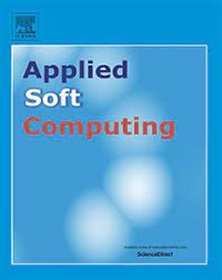Nested deep learning with learned network embeddings for software defect prediction
IF 7.2
1区 计算机科学
Q1 COMPUTER SCIENCE, ARTIFICIAL INTELLIGENCE
引用次数: 0
Abstract
Existing software (SW) defect prediction approaches and the models are majorly based on features extracted from the code of the software to build defect datasets for predictive modeling. However, these models fail to sufficiently capture the complex, latent dependencies within the software components, which acts as a hindrance in achieving higher predictive accuracy. This study introduces an improved defect prediction model, the Nested Deep Learning (NDL) model, that leverages network embeddings from call graphs for enhanced representation of intricate hierarchical class dependencies and interactions. This work evaluates six network-embedding algorithms by applying them to call graphs of 10 real software projects, generating embeddings of dimensions 32 and 128. A total of 50 NDL models—with and without dropout layers—are developed, and a comparative evaluation of these models is conducted against traditional classifier-based models. This evaluation demonstrated the superiority of the NDL model with dropout, achieving a mean AUC of 0.87, an 8.98 % improvement over the traditional classifier-based models. Among the evaluated embedding methods, LINE embeddings outperformed others, and integrating network embeddings with software metrics led to a 15.85 % AUC improvement over using software metrics alone. The optimal configuration—combining software metrics with LINE embeddings (dimension 128) in an NDL model with three deep learning layers and dropout—achieved a mean AUC of 0.93, surpassing all other configurations by 3.33–14.81 %. This study is the first to validate the effectiveness of a nested deep learning framework for modeling call graph dependencies through network embeddings, providing a scalable and robust approach for improving software defect prediction.
求助全文
约1分钟内获得全文
求助全文
来源期刊

Applied Soft Computing
工程技术-计算机:跨学科应用
CiteScore
15.80
自引率
6.90%
发文量
874
审稿时长
10.9 months
期刊介绍:
Applied Soft Computing is an international journal promoting an integrated view of soft computing to solve real life problems.The focus is to publish the highest quality research in application and convergence of the areas of Fuzzy Logic, Neural Networks, Evolutionary Computing, Rough Sets and other similar techniques to address real world complexities.
Applied Soft Computing is a rolling publication: articles are published as soon as the editor-in-chief has accepted them. Therefore, the web site will continuously be updated with new articles and the publication time will be short.
 求助内容:
求助内容: 应助结果提醒方式:
应助结果提醒方式:


